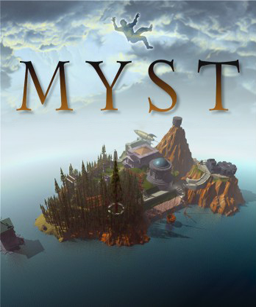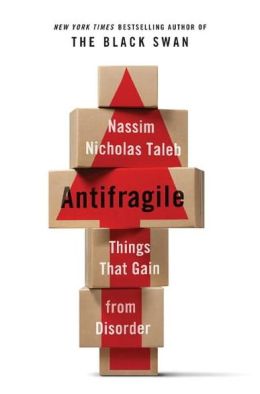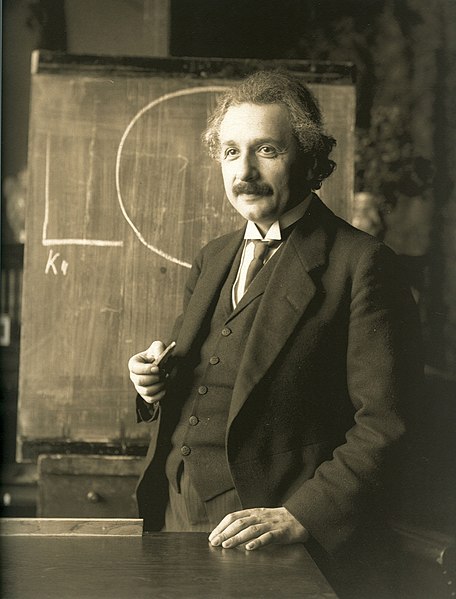 Fast food, snack foods and all manner of processed foods are a multi-billion dollar global industry. So, it’s no surprise that companies collectively spend $100s of millions each year to perfect the perfect bite. Importantly, part of this perfection (for the businesses) is to ensure that you keep coming back for more.
Fast food, snack foods and all manner of processed foods are a multi-billion dollar global industry. So, it’s no surprise that companies collectively spend $100s of millions each year to perfect the perfect bite. Importantly, part of this perfection (for the businesses) is to ensure that you keep coming back for more.
By all accounts the “cheeto” is as close to processed-food-addiction-heaven as we can get — so far. It has just the right amount of salt (too much) and fat (too much), crunchiness, and something known as vanishing caloric density (melts in the mouth at the optimum rate). Aesthetically sad, but scientifically true.
[div class=attrib]From the New York Times:[end-div]
On the evening of April 8, 1999, a long line of Town Cars and taxis pulled up to the Minneapolis headquarters of Pillsbury and discharged 11 men who controlled America’s largest food companies. Nestlé was in attendance, as were Kraft and Nabisco, General Mills and Procter & Gamble, Coca-Cola and Mars. Rivals any other day, the C.E.O.’s and company presidents had come together for a rare, private meeting. On the agenda was one item: the emerging obesity epidemic and how to deal with it. While the atmosphere was cordial, the men assembled were hardly friends. Their stature was defined by their skill in fighting one another for what they called “stomach share” — the amount of digestive space that any one company’s brand can grab from the competition.
James Behnke, a 55-year-old executive at Pillsbury, greeted the men as they arrived. He was anxious but also hopeful about the plan that he and a few other food-company executives had devised to engage the C.E.O.’s on America’s growing weight problem. “We were very concerned, and rightfully so, that obesity was becoming a major issue,” Behnke recalled. “People were starting to talk about sugar taxes, and there was a lot of pressure on food companies.” Getting the company chiefs in the same room to talk about anything, much less a sensitive issue like this, was a tricky business, so Behnke and his fellow organizers had scripted the meeting carefully, honing the message to its barest essentials. “C.E.O.’s in the food industry are typically not technical guys, and they’re uncomfortable going to meetings where technical people talk in technical terms about technical things,” Behnke said. “They don’t want to be embarrassed. They don’t want to make commitments. They want to maintain their aloofness and autonomy.”
A chemist by training with a doctoral degree in food science, Behnke became Pillsbury’s chief technical officer in 1979 and was instrumental in creating a long line of hit products, including microwaveable popcorn. He deeply admired Pillsbury but in recent years had grown troubled by pictures of obese children suffering from diabetes and the earliest signs of hypertension and heart disease. In the months leading up to the C.E.O. meeting, he was engaged in conversation with a group of food-science experts who were painting an increasingly grim picture of the public’s ability to cope with the industry’s formulations — from the body’s fragile controls on overeating to the hidden power of some processed foods to make people feel hungrier still. It was time, he and a handful of others felt, to warn the C.E.O.’s that their companies may have gone too far in creating and marketing products that posed the greatest health concerns.
In This Article:
• ‘In This Field, I’m a Game Changer.’
• ‘Lunchtime Is All Yours’
• ‘It’s Called Vanishing Caloric Density.’
• ‘These People Need a Lot of Things, but They Don’t Need a Coke.’
The discussion took place in Pillsbury’s auditorium. The first speaker was a vice president of Kraft named Michael Mudd. “I very much appreciate this opportunity to talk to you about childhood obesity and the growing challenge it presents for us all,” Mudd began. “Let me say right at the start, this is not an easy subject. There are no easy answers — for what the public health community must do to bring this problem under control or for what the industry should do as others seek to hold it accountable for what has happened. But this much is clear: For those of us who’ve looked hard at this issue, whether they’re public health professionals or staff specialists in your own companies, we feel sure that the one thing we shouldn’t do is nothing.”
As he spoke, Mudd clicked through a deck of slides — 114 in all — projected on a large screen behind him. The figures were staggering. More than half of American adults were now considered overweight, with nearly one-quarter of the adult population — 40 million people — clinically defined as obese. Among children, the rates had more than doubled since 1980, and the number of kids considered obese had shot past 12 million. (This was still only 1999; the nation’s obesity rates would climb much higher.) Food manufacturers were now being blamed for the problem from all sides — academia, the Centers for Disease Control and Prevention, the American Heart Association and the American Cancer Society. The secretary of agriculture, over whom the industry had long held sway, had recently called obesity a “national epidemic.”
Mudd then did the unthinkable. He drew a connection to the last thing in the world the C.E.O.’s wanted linked to their products: cigarettes. First came a quote from a Yale University professor of psychology and public health, Kelly Brownell, who was an especially vocal proponent of the view that the processed-food industry should be seen as a public health menace: “As a culture, we’ve become upset by the tobacco companies advertising to children, but we sit idly by while the food companies do the very same thing. And we could make a claim that the toll taken on the public health by a poor diet rivals that taken by tobacco.”
“If anyone in the food industry ever doubted there was a slippery slope out there,” Mudd said, “I imagine they are beginning to experience a distinct sliding sensation right about now.”
Mudd then presented the plan he and others had devised to address the obesity problem. Merely getting the executives to acknowledge some culpability was an important first step, he knew, so his plan would start off with a small but crucial move: the industry should use the expertise of scientists — its own and others — to gain a deeper understanding of what was driving Americans to overeat. Once this was achieved, the effort could unfold on several fronts. To be sure, there would be no getting around the role that packaged foods and drinks play in overconsumption. They would have to pull back on their use of salt, sugar and fat, perhaps by imposing industrywide limits. But it wasn’t just a matter of these three ingredients; the schemes they used to advertise and market their products were critical, too. Mudd proposed creating a “code to guide the nutritional aspects of food marketing, especially to children.”
“We are saying that the industry should make a sincere effort to be part of the solution,” Mudd concluded. “And that by doing so, we can help to defuse the criticism that’s building against us.”
What happened next was not written down. But according to three participants, when Mudd stopped talking, the one C.E.O. whose recent exploits in the grocery store had awed the rest of the industry stood up to speak. His name was Stephen Sanger, and he was also the person — as head of General Mills — who had the most to lose when it came to dealing with obesity. Under his leadership, General Mills had overtaken not just the cereal aisle but other sections of the grocery store. The company’s Yoplait brand had transformed traditional unsweetened breakfast yogurt into a veritable dessert. It now had twice as much sugar per serving as General Mills’ marshmallow cereal Lucky Charms. And yet, because of yogurt’s well-tended image as a wholesome snack, sales of Yoplait were soaring, with annual revenue topping $500 million. Emboldened by the success, the company’s development wing pushed even harder, inventing a Yoplait variation that came in a squeezable tube — perfect for kids. They called it Go-Gurt and rolled it out nationally in the weeks before the C.E.O. meeting. (By year’s end, it would hit $100 million in sales.)
According to the sources I spoke with, Sanger began by reminding the group that consumers were “fickle.” (Sanger declined to be interviewed.) Sometimes they worried about sugar, other times fat. General Mills, he said, acted responsibly to both the public and shareholders by offering products to satisfy dieters and other concerned shoppers, from low sugar to added whole grains. But most often, he said, people bought what they liked, and they liked what tasted good. “Don’t talk to me about nutrition,” he reportedly said, taking on the voice of the typical consumer. “Talk to me about taste, and if this stuff tastes better, don’t run around trying to sell stuff that doesn’t taste good.”
To react to the critics, Sanger said, would jeopardize the sanctity of the recipes that had made his products so successful. General Mills would not pull back. He would push his people onward, and he urged his peers to do the same. Sanger’s response effectively ended the meeting.
“What can I say?” James Behnke told me years later. “It didn’t work. These guys weren’t as receptive as we thought they would be.” Behnke chose his words deliberately. He wanted to be fair. “Sanger was trying to say, ‘Look, we’re not going to screw around with the company jewels here and change the formulations because a bunch of guys in white coats are worried about obesity.’ ”
The meeting was remarkable, first, for the insider admissions of guilt. But I was also struck by how prescient the organizers of the sit-down had been. Today, one in three adults is considered clinically obese, along with one in five kids, and 24 million Americans are afflicted by type 2 diabetes, often caused by poor diet, with another 79 million people having pre-diabetes. Even gout, a painful form of arthritis once known as “the rich man’s disease” for its associations with gluttony, now afflicts eight million Americans.
The public and the food companies have known for decades now — or at the very least since this meeting — that sugary, salty, fatty foods are not good for us in the quantities that we consume them. So why are the diabetes and obesity and hypertension numbers still spiraling out of control? It’s not just a matter of poor willpower on the part of the consumer and a give-the-people-what-they-want attitude on the part of the food manufacturers. What I found, over four years of research and reporting, was a conscious effort — taking place in labs and marketing meetings and grocery-store aisles — to get people hooked on foods that are convenient and inexpensive. I talked to more than 300 people in or formerly employed by the processed-food industry, from scientists to marketers to C.E.O.’s. Some were willing whistle-blowers, while others spoke reluctantly when presented with some of the thousands of pages of secret memos that I obtained from inside the food industry’s operations. What follows is a series of small case studies of a handful of characters whose work then, and perspective now, sheds light on how the foods are created and sold to people who, while not powerless, are extremely vulnerable to the intensity of these companies’ industrial formulations and selling campaigns.
[div class=attrib]Read the entire article after the jump.[end-div]
[div class=attrib]Image: Cheeto puffs. Courtesy of tumblr.[end-div]



 Only yesterday we
Only yesterday we 
 Fast food, snack foods and all manner of processed foods are a multi-billion dollar global industry. So, it’s no surprise that companies collectively spend $100s of millions each year to perfect the perfect bite. Importantly, part of this perfection (for the businesses) is to ensure that you keep coming back for more.
Fast food, snack foods and all manner of processed foods are a multi-billion dollar global industry. So, it’s no surprise that companies collectively spend $100s of millions each year to perfect the perfect bite. Importantly, part of this perfection (for the businesses) is to ensure that you keep coming back for more. The 13th Amendment to the United States Constitution was enacted in December 1865. It abolished slavery.
The 13th Amendment to the United States Constitution was enacted in December 1865. It abolished slavery.
 You might expect to find police drones in the pages of a science fiction novel by Philip K. Dick or Iain M. Banks. But by 2015, citizens of the United States may well see these unmanned flying machines patrolling the skies over the homeland. The U.S. government recently pledged to loosen Federal Aviation Administration (FAA) restrictions that would allow local law enforcement agencies to use drones in just a few short years. So, soon the least of your worries will be traffic signal cameras and the local police officer armed with a radar gun. Our home-grown drones are likely to be deployed first for surveillance. But, undoubtedly armaments will follow. Hellfire missiles over Helena, Montana anyone?
You might expect to find police drones in the pages of a science fiction novel by Philip K. Dick or Iain M. Banks. But by 2015, citizens of the United States may well see these unmanned flying machines patrolling the skies over the homeland. The U.S. government recently pledged to loosen Federal Aviation Administration (FAA) restrictions that would allow local law enforcement agencies to use drones in just a few short years. So, soon the least of your worries will be traffic signal cameras and the local police officer armed with a radar gun. Our home-grown drones are likely to be deployed first for surveillance. But, undoubtedly armaments will follow. Hellfire missiles over Helena, Montana anyone? Nassim Nicholas Taleb, one of our favorite thinkers and writers over here at theDiagonal recently published Antifragile, his follow-up to his successful “black swan” title Black Swan. In Antifragile Taleb argues that some things thrive when subjected to volatility, disorder and uncertainty. He labels the positive reaction to these external stressors, antifragility. (Ironically, this book was published by Random House).
Nassim Nicholas Taleb, one of our favorite thinkers and writers over here at theDiagonal recently published Antifragile, his follow-up to his successful “black swan” title Black Swan. In Antifragile Taleb argues that some things thrive when subjected to volatility, disorder and uncertainty. He labels the positive reaction to these external stressors, antifragility. (Ironically, this book was published by Random House).
 “Innovate or die” goes the business mantra. Embrace creativity or you and your company will fall by the wayside and wither into insignificance.
“Innovate or die” goes the business mantra. Embrace creativity or you and your company will fall by the wayside and wither into insignificance. Life coach Jayne Morris suggests that de-cluttering your desk, attic or garage can add positive energy to your personal and business life. Morris has coached numerous business leaders and celebrities in the art of clearing clutter.
Life coach Jayne Morris suggests that de-cluttering your desk, attic or garage can add positive energy to your personal and business life. Morris has coached numerous business leaders and celebrities in the art of clearing clutter. Some believe that AIDS was created by the U.S. Government or bestowed by a malevolent god. Some believe that Neil Armstrong never set foot on the moon, while others believe that Nazis first established a moon base in 1942. Some believe that recent tsunamis were caused by the U.S. military, and that said military is hiding evidence of alien visits in Area 51, Nevada. The latest of course is the great conspiracy of climate change, which apparently is created by socialists seeking to destroy the United States. This conspiratorial thinking makes for good reality-TV, and presents wonderful opportunities for psychological research. Why after all, in the face of seemingly insurmountable evidence, widespread common consensus and fundamental scientific reasoning, do such ideas, and their believers persist?
Some believe that AIDS was created by the U.S. Government or bestowed by a malevolent god. Some believe that Neil Armstrong never set foot on the moon, while others believe that Nazis first established a moon base in 1942. Some believe that recent tsunamis were caused by the U.S. military, and that said military is hiding evidence of alien visits in Area 51, Nevada. The latest of course is the great conspiracy of climate change, which apparently is created by socialists seeking to destroy the United States. This conspiratorial thinking makes for good reality-TV, and presents wonderful opportunities for psychological research. Why after all, in the face of seemingly insurmountable evidence, widespread common consensus and fundamental scientific reasoning, do such ideas, and their believers persist? Edward Tufte built the first little blue box in 1962. The blue box contained home-made circuitry and a tone generator that could place free calls over the phone network to anywhere in the world.
Edward Tufte built the first little blue box in 1962. The blue box contained home-made circuitry and a tone generator that could place free calls over the phone network to anywhere in the world. Apparently the world once thought of the countries that make up the Scandinavian region as dull and boring. Nothing much happened in Norway, Sweden, Finland and Denmark besides endless winters, ABBA, Volvo and utopian socialist experiments. Not any longer. Over the last couple of decades this region has become a hotbed of artistic, literary and business creativity.
Apparently the world once thought of the countries that make up the Scandinavian region as dull and boring. Nothing much happened in Norway, Sweden, Finland and Denmark besides endless winters, ABBA, Volvo and utopian socialist experiments. Not any longer. Over the last couple of decades this region has become a hotbed of artistic, literary and business creativity. Emily Dickinson has been much written about, but still remains enigmatic. Many of her peers thought her to be eccentric and withdrawn. Only after her death did the full extent of her prolific writing become apparent. To this day, her unique poetry is regarded as having ushered in a new era of personal observation and expression.
Emily Dickinson has been much written about, but still remains enigmatic. Many of her peers thought her to be eccentric and withdrawn. Only after her death did the full extent of her prolific writing become apparent. To this day, her unique poetry is regarded as having ushered in a new era of personal observation and expression.
 Hot on the heels of recent successes by the Texas School Board of Education (SBOE) to revise history and science curricula, legislators in Missouri are planning to redefine commonly accepted scientific principles. Much like the situation in Texas the Missouri House is mandating that intelligent design be taught alongside evolution, in equal measure, in all the state’s schools. But, in a bid to take the lead in reversing thousands of years of scientific progress Missouri plans to redefine the actual scientific framework. So, if you can’t make “intelligent design” fit the principles of accepted science, then just change the principles themselves — first up, change the meanings of the terms “scientific hypothesis” and “scientific theory”.
Hot on the heels of recent successes by the Texas School Board of Education (SBOE) to revise history and science curricula, legislators in Missouri are planning to redefine commonly accepted scientific principles. Much like the situation in Texas the Missouri House is mandating that intelligent design be taught alongside evolution, in equal measure, in all the state’s schools. But, in a bid to take the lead in reversing thousands of years of scientific progress Missouri plans to redefine the actual scientific framework. So, if you can’t make “intelligent design” fit the principles of accepted science, then just change the principles themselves — first up, change the meanings of the terms “scientific hypothesis” and “scientific theory”.
 The illustrious Vaccinia virus may well have an Act Two in its future.
The illustrious Vaccinia virus may well have an Act Two in its future.

 There is a certain school of thought that asserts that scientific genius is a thing of the past. After all, we haven’t seen the recent emergence of pivotal talents such as Galileo, Newton, Darwin or Einstein. Is it possible that fundamentally new ways to look at our world — that a new mathematics or a new physics is no longer possible?
There is a certain school of thought that asserts that scientific genius is a thing of the past. After all, we haven’t seen the recent emergence of pivotal talents such as Galileo, Newton, Darwin or Einstein. Is it possible that fundamentally new ways to look at our world — that a new mathematics or a new physics is no longer possible?